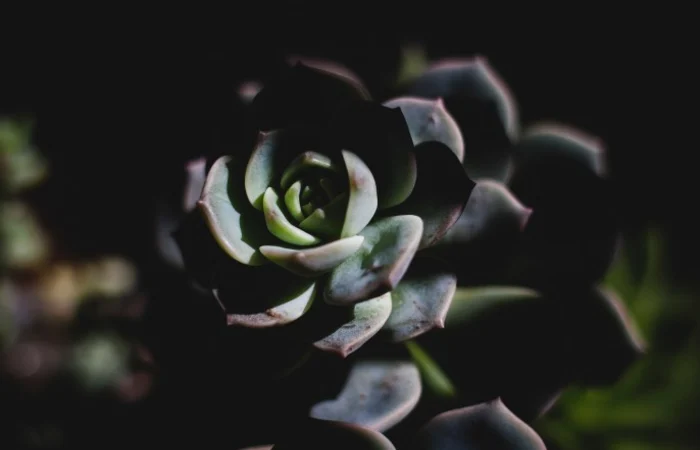Watering succulents in spring can be a delicate balance, as this season marks the beginning of their active growth period. Understanding the right watering frequency is crucial for the health and vitality of your succulent plants. This article aims to provide a comprehensive guide on how often to water succulents in spring, structured into simple sections with clear and concise information.
The Importance of Watering in Spring
The Growth Cycle of Succulents
Spring signals the transition from dormancy to growth for most succulents. As temperatures rise and daylight hours increase, succulents start to produce new leaves and roots. Therefore, adequate water is essential to support this growth phase.
Balancing Water Needs
While succulents need more water in spring, overwatering can lead to root rot and other diseases. Finding the right balance between sufficient hydration and avoiding excess is key to maintaining healthy succulents.
Factors Influencing Watering Frequency
Type of Succulent
Different succulent species have varying water needs. Some, like Echeveria, require less water than others, such as Sedum. Understanding the specific needs of your succulents is essential for tailored watering.
Climate and Location
The local climate, including temperature, humidity, and rainfall, affects how often you should water your succulents. Plants in warmer, dryer climates will need more frequent watering than those in cooler, more humid areas.
Pot Size and Material
Smaller pots dry out faster than larger ones. Additionally, pots made of porous materials like terra cotta lose moisture more quickly than plastic or ceramic pots.
Soil Composition
Well-draining soil is crucial for succulents. Soils rich in perlite, pumice, or sand retain less water, necessitating more frequent watering than denser, water-retentive soils.
General Watering Guidelines
Observing Soil Moisture
The most reliable method to determine watering needs is by checking the soil moisture. Allow the top layer of soil to dry out completely before watering. This usually translates to watering every 7 to 14 days, depending on the factors mentioned above.
Watering Thoroughly
When you do water, ensure it reaches the roots by pouring water slowly until it drains out of the bottom of the pot. This encourages deep root growth and prevents surface root rot.
Avoiding Water on Leaves
Water should be directed at the soil, not the leaves. Wet leaves can lead to fungal infections, especially in humid conditions.
Specific Watering Needs for Common Succulents
Echeveria
These rosette-forming succulents store water in their leaves. They should be watered every 10 to 14 days in spring, allowing the soil to dry out completely between waterings.
Sedum
Sedums, known for their trailing or upright growth, have shallower root systems and require more frequent watering—every 7 to 10 days in spring. Ensure the soil is well-drained to prevent rot.
Agave
Agaves are slow-growing and can store large amounts of water in their thick leaves. Water them every 14 to 21 days, allowing the soil to dry out thoroughly.
Graptoveria
These hybrid succulents have a mix of water-storing leaf traits. Water them every 10 to 12 days, ensuring the soil dries out between waterings to prevent overwatering.
Lithops
Lithops, often mistaken for stones due to their unique shape, have minimal water needs. Water them sparingly, every 14 to 21 days, and only if the soil feels dry.
Practical Tips for Successful Watering
Using a Watering Can
A watering can with a narrow spout allows for more controlled watering, directing water precisely at the soil and minimizing leaf splash.
Monitoring Plant Health
Regularly check your succulents for signs of underwatering (wrinkled, shriveled leaves) or overwatering (mushy, discolored leaves). Adjust your watering schedule accordingly.
Airflow and Drainage
Good airflow around the plants and well-draining soil help prevent fungal diseases and root rot. Ensure pots are not overcrowded, and consider using a fan to circulate air in enclosed spaces.
Seasonal Adjustments
As spring progresses into summer, you may need to increase watering slightly due to higher temperatures and evaporation rates. Conversely, in cooler spring weather, reduce watering frequency.
Repotting Considerations
If your succulents have outgrown their pots, consider repotting in the spring. Larger pots can hold more soil and moisture, altering watering needs.
Conclusion
Watering succulents in spring requires a delicate balance of observation, adjustment, and understanding of individual plant needs. By considering the type of succulent, climate, pot size, soil composition, and monitoring plant health, you can create a watering schedule that supports healthy growth and vibrancy. Remember, succulents thrive on neglect in terms of watering—less is often more. With careful attention to these details, your succulent collection will flourish in the springtime.
Related Topics:


